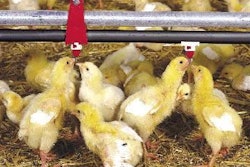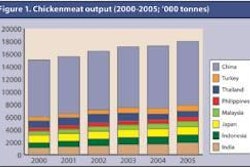W. A. Dozier III (USDA-ARS, Mississippi, USA) reported last year that most maize-soybean meal diets are produced by mixing ground or cracked maize with the other feed ingredients immediately prior to conditioning and pelleting.
In contrast, European feed producers insert an addition step, namely grinding of the mixed ingredients before conditioning and pelleting. This is because the Europeans generally use more ingredients and, in order to improve particle size uniformity, it is more efficient to grind the mash than process each ingredient individually.
Dr Dozier found that post-mix grinding of a maize-soybean meal diet increased the pellet durability index and resulted in a greater number of pellets than with conventional grinding. Broiler provided with the feed that had been ground after mixing consumed less feed (P<0.01) and had better feed efficiency (P<0.001) to 41 days of age. There were no differences in bodyweight gain or in the carcass yields of the two groups.
The author proposed that further work is required to determine whether the improvements in bird performance are sufficient to cover the extra costs of the post-mixing grinding step.
— Dozier W.A. III. 2005. Growth and meat yield responses of male broilers provided feeds subjected to postmix grinding during a 41-day production period. Journal of Applied Poultry Research, 14: 476-482

















